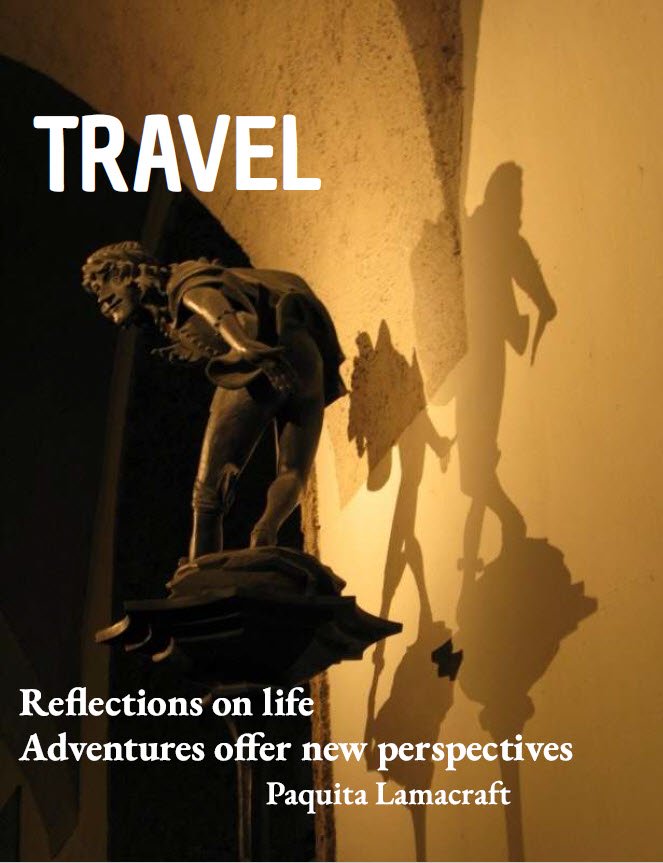Notre Dame Cathedral
It really is a must to visit Notre Dame Cathedral. Read these pages that were written before the fire of April 2019, but still go there and pay your respects to a grand lady much loved in the world.
To donate to her restoration here is the link to the Dartagnans fund.
Dartagnans have long been great preservers of partimonie with their Crowd Funding efforts..
The face of Notre Dame Cathedral in Paris
Construction on this amazing facade started from plans drawn in 1200 and took less than a century to build.
The design is highly symbolic:the two towers rest on four buttresses and the symbolism of shapes and lines is important.
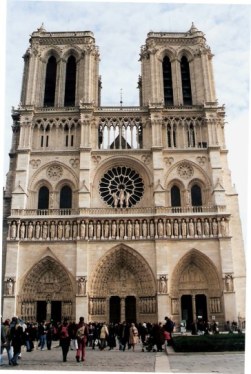
The circle of the rose window is boundless - with no end or beginning - a visual metaphor for God.
The 43 metres high (about 141') bulk of the towers rise towards heaven, while the two wide horizontal bands are thought to represent a form of earthbound sanctuary for mankind.
The main central portal is the Portal of the Last Judgment, and on the left is the portal of The Virgin, and on the right that of St. Anne.
Shown below is the portal of the Last Judgement.
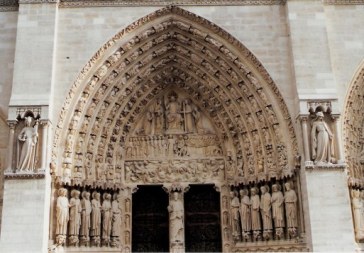
No matter what language you speak, you cannot help overhearing tour group explanations of the detail of the Saints surrounding the entrance and the statues above.
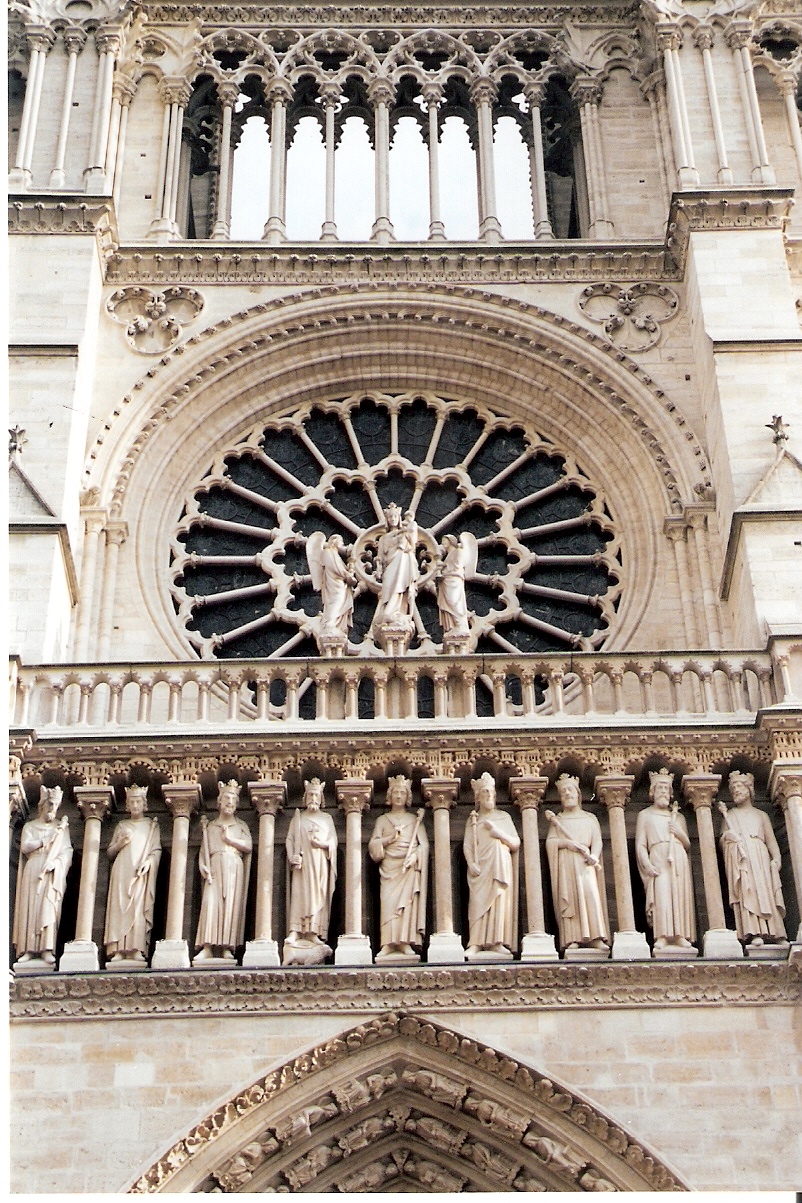
Warning to car-driving tourists at Notre Dame Cathedral in Paris
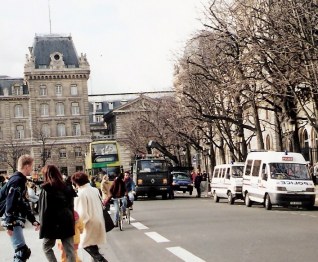
Speaking of judgements: don't park illegally anywhere in Paris, but especially here.
If you do, a truck just comes along and picks up your vehicle.
Getting it back is a long and complex and not inexpensive process.
To give some indication, it used to be €150 for the towing, plus a parking fine of €135 - and for those not quick to collect their car, add a
daily charge of €26. In 2016 Le Parisien reported that more than 250,000 cars were impounded this way.
Behind Notre Dame Cathedral - a small Paris garden
But like most major tourism attractions, the back of Notre Dame Cathedral is as interesting as the front – and usually much less crowded!
In the park behind Notre Dame, two lovers snuggled together.
A man sat reading his paper. I wonder if he lives nearby and comes here often – perhaps a neighbour of the lady watching her children play. Has he seen it all and it is now nothing to wonder at, just a calming backdrop to everyday life?
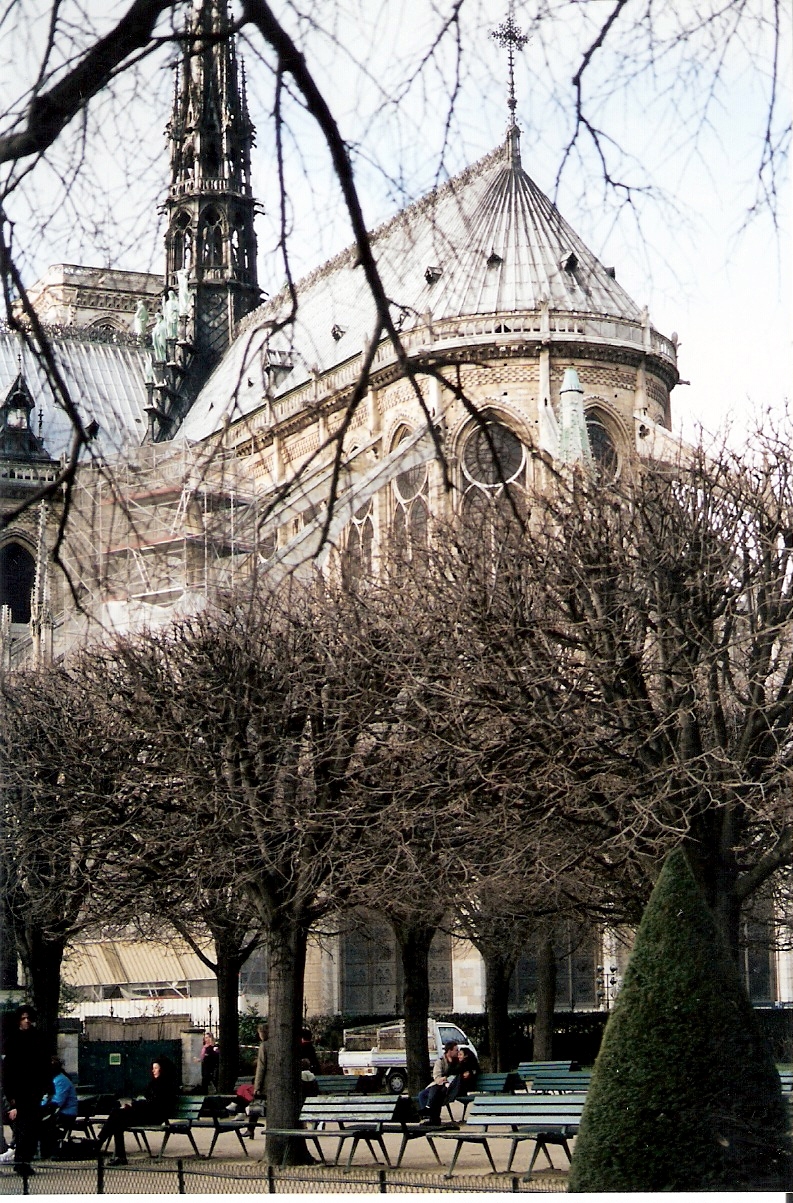
Spires, buttresses, and decoration of Notre Dame Cathedral
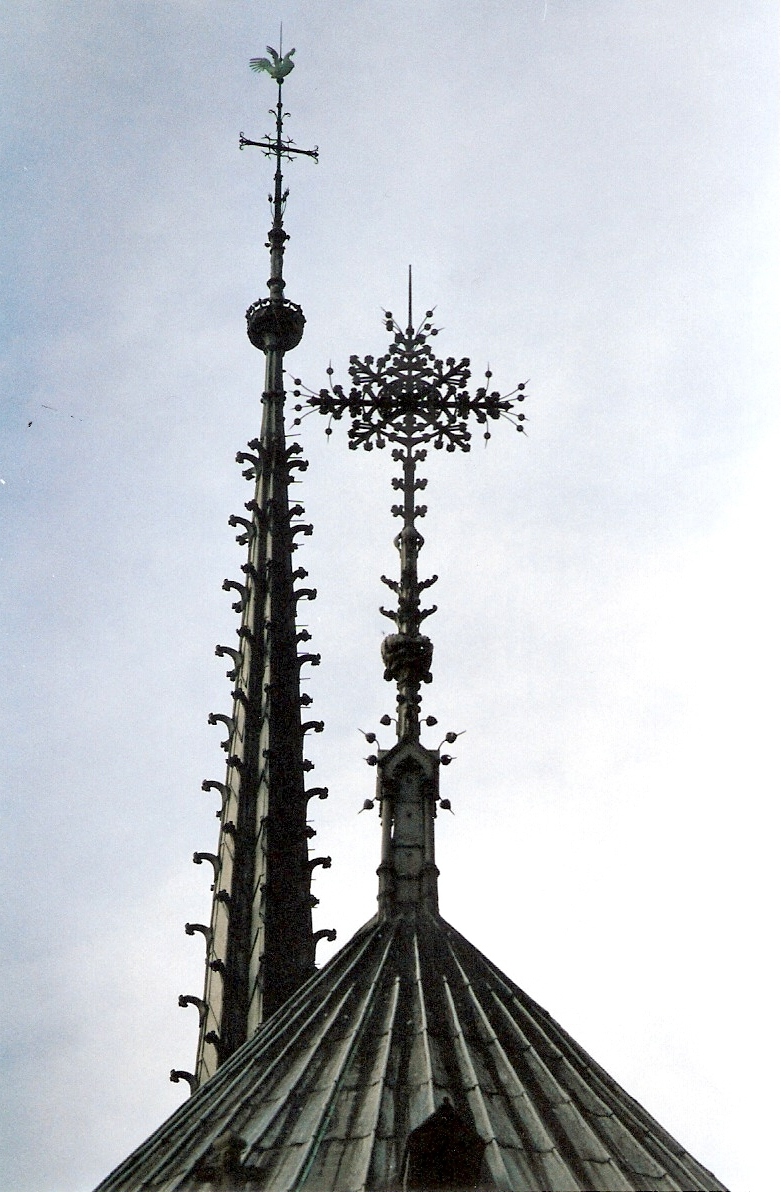
I wonder if the locals see the detail of the roof spires?
The main spire is 68 metres high (over 226') and until the building of the Eiffel Tower, it was the highest structure in Paris.
Originally built in the 13th century, the original spire became increasingly battered by the elements and was finally removed in 1786.
In the 19th century the new lead-covered oak spire was erected.
The highly decorated flying butresses that are 15 metres in length were added in the 14th century to help prop up the walls of the cathedral. They are overlooked by even more saints and by gargoyles.
The gargoyles are on dual duty in protection from evil spirits and acting as water spouts diverting the rain from the rooftop to a suitably non-destructive distance from the building.
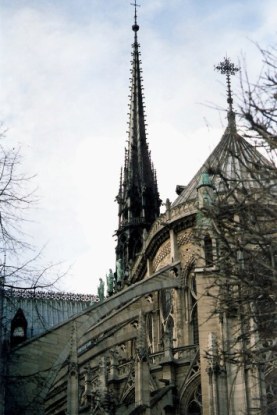
Whether the locals, like most of us when surrounded by familiar things, ever really marvel at Notre Dame, I don't know. However, I am sure that even if the Grand Old Lady is too familar to a wonder to them any more, they know her to provide a holy place, for once inside there can be no doubt of that.
Despite the commercialism, there is a depth of feeling about this working church that overcomes that of it being one of the world’s best known, and most visited tourist attractions.
Notre Dame Paris was one of the first Gothic cathedrals to be built - and one of the first to use Flying Buttresses.
While
now we just admire their beauty, in fact Flying Buttresses perform a
critical function in Gothic architecture. They are designed to hold up
the towering high walls that were a new architectural feature that posed
its own engineering challenges.
It was not for artistic purposes
that Flying Buttresses were added to Notre Dame: it was when stress
fractures started to appear in the walls during construction.
With saints and gargoyles everywhere abundant, Notre Dame reminds me of a cake decorator gone wild with a wedding cake.
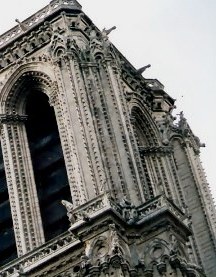
There seems to be no surface undecorated.
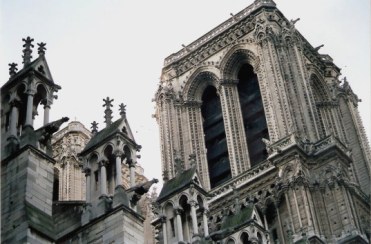
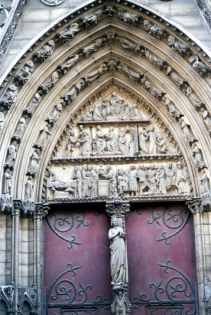
While it is an interesting place and a must to see, it is a bit too busy for me: busy with people, and busy in detail.
Before I climbed the tower, I noticed the simplicity of these doors.
I found them a welcome contrast to all the ornate decorations.
Inside Notre Dame Cathedral - Paris style
Victor Hugo is most remembered for creating The Hunchback of Notre Dame, but while his Quasimodo has passed into legend, we should also give thanks for his genuine interest in the grand old lady herself, here glowing in welcome.
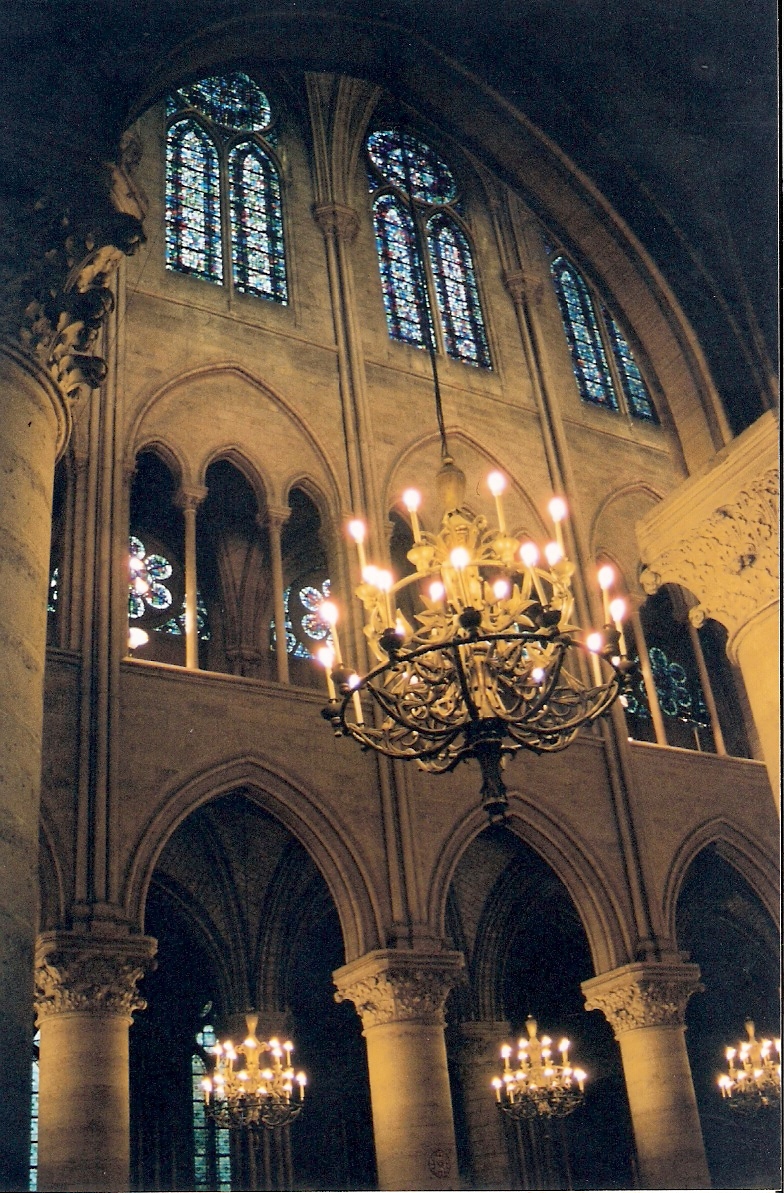
This chandelier drew me towards it, but I was unable to get a detailed view.This I was able to rectify here, courtesy of Wikimedia Commons to whom I thankfully attribute this photo of the 'corona' chandelier's detail.
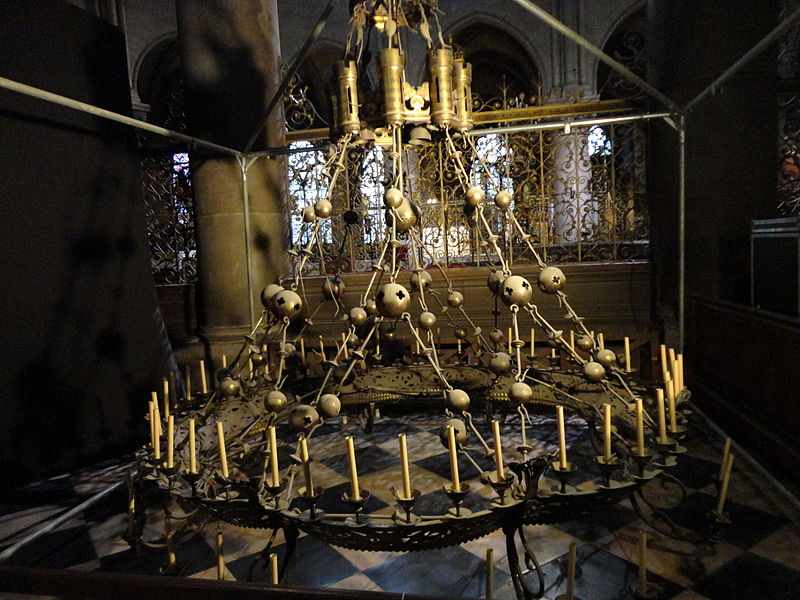
Wikimedia Commons-Vastily: GNU Free Documentation License
Victor Hugo loved this grand old lady. He was critical of the architectural vandalism enacted upon Our Lady in Paris following the Revolution, writing:
Upon the face of this old queen
of the French cathedrals,
beside each wrinkle we find a scar.
His criticism inspired Eugene Emmanuel Violet-le-Duc to restore her to earlier glories - bringing back the stained glass, removing white-wash from inside, and treating the outside against industrial pollution.
Our Lady is finer for the work of Violet-le-Duc - and for Victor Hugo’s criticism.
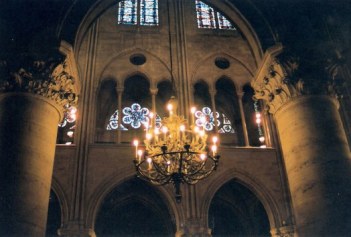
Like all great mothers, Notre Dame Cathedral welcomes us – drawing us to her quiet places and to the peace to found there despite the hundreds of visitors per hour.
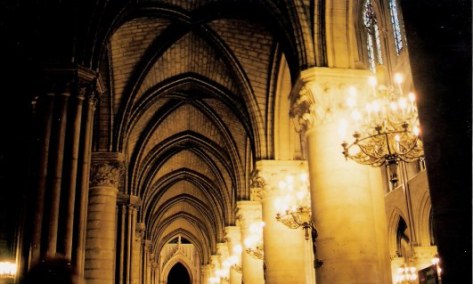
I love to visit beautiful churches and cathedrals and absorb their peacefulness, but I think of the world as my cathedral.
In the words of Thomas Carlyle:
The old cathedrals are good,
but the great blue dome that hangs over everything
is better
There are many ways to pray in Paris - and dancing is one
There are cathedrals and there are cathedrals.
Some are cathedrals of dance!
Before our visit to Notre Dame Cathedral, we had a date at Barrio Latino.
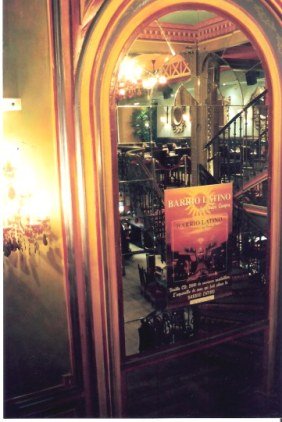
Barrio Latino in Paris has an extraordinary interior decorated like a Spanish bordello - not that I have been in one.
Having said that I realise it is not true. An interesting place in Seville where I stayed by accident (“Oh sure!” you say!) when all the hotels were full – turned out to be a bordello - but that is another story!
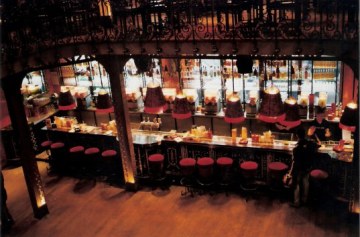
Our date with this cathedral of dance meant that we danced all night.
Should one confess? …and is it a sin to dance all night – or a sin not to?
Go inside the great cathedral of Notre Dame to discuss such questions with those ethereal bodies who will know.
But no matter how you spend the night before, to visit Notre Dame is a must, whether to confess, climb as if to heaven, join the crowds
inside in examining its features, light your candles, pray, listen to a
concert, or to participate in the normal activities of a working
church.
However you spent the night before:
Notre Dame Cathedral is a must to visit in Paris
Here is the link to donate to restoration
Start at Zero
When you go there, make note of the “Zero Kilometer” stone outside in the square.
This is the point from which all mileages in France are measured, so if you visit, you can always then say that at least once in your life you started from zero!
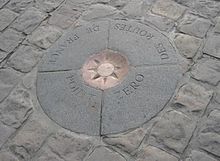
Photograph taken by Michael Reeve, 30 January 2004 Courtesy of Wikimedia Commons
This file is licensed under the Creative Commons Attribution-Share Alike 3.0 Unported license.
For more Paris pages:
Tulieries Gardens
